In alot of ways, what keeps a longer manga engaging isn’t its main characters, but the side characters. Though our initial emotional investments as readers are in the main characters, the supporting cast and their links with those main characters are what keeps the story fresh.
Kunisawa Amon is a blip on the radar for most Hana Yori Dango readers. Like most of the antagonists in the manga (and by antagonists, I mean people who obstruct the getting-together of main characters Domyouji Tsukasa and Makino Tsukushi) he receives his own story arc, and eventually fades into the background. However, his story is perhaps the one of the most pertinant parts of the manga, if simply for the character growth he forces upon Tsukushi.
For those unfamiliar with the manga, Hana Yori Dango is another one of Kamio Youko’s manga. Hana Yori Dango is by far her most famous work, and chronicles the story of the dirt poor Makino Tsukushi, as she enters the aristocratic Eitoku High School. There she encounters the F4 (short for “Flowery 4”) and its violent, idiotic, and overwhelmingly rich leader, Domyouji Tsukasa. The manga dedicates itself to their rivalry, and then unprobable romance. Hana Yori Dango was Kamio’s first and longest work, and much like her main characters, the artwork grows and improves considerably over time.
Tsukushi, backed into a wall by Domyouji Tsukasa’s overlording and cruel mother, is forced to abandon their fledgling relationship to save her friends. To ease her depression, her friends set up a goukon with some college boys. Kunisawa is introduced as Kiyonaga, a violend and dark college student who shows up to the goukon.
The older Kunisawa, parading as Domyouji’s cousin and going by the name of Kiyonaga, smokes, and generally acts like a giant dick. A very distracted Tsukushi, still raw from her forced breakup with Tsukasa, doesn’t know how to react to this. She lashes out violently, as she would with Tsukasa; forgetting that the two are separate people.
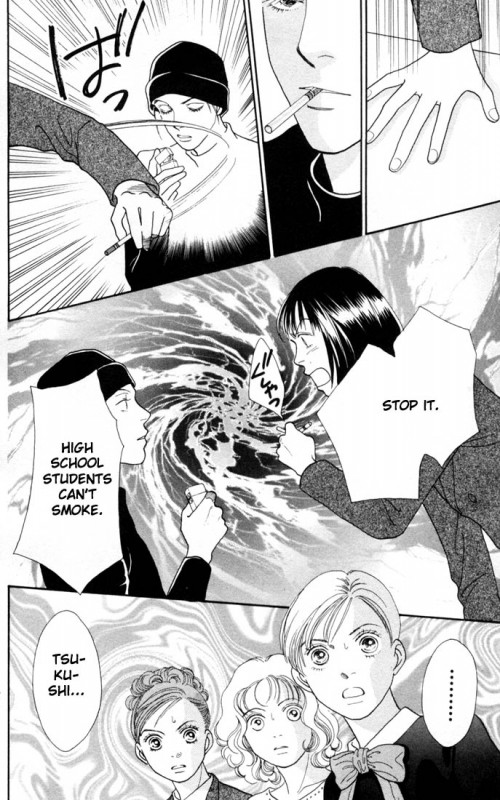
.. and winds up embarrassing herself and her friends.
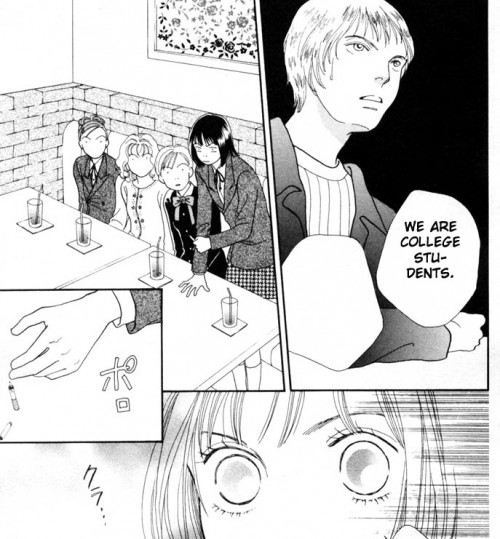
A chance meeting with Tsukasa after the goukon only serves to worsen things. Tsukushi and Tsukasa, who have been frozen at a crossroads for far too long, finally seem to move forward, though initially, not in the way that one would hope – as he throws a (very expensive, custom-made) Cartier necklace in to a dirty Tokyo river. Though not positive progress, the couple finally begins to move again.
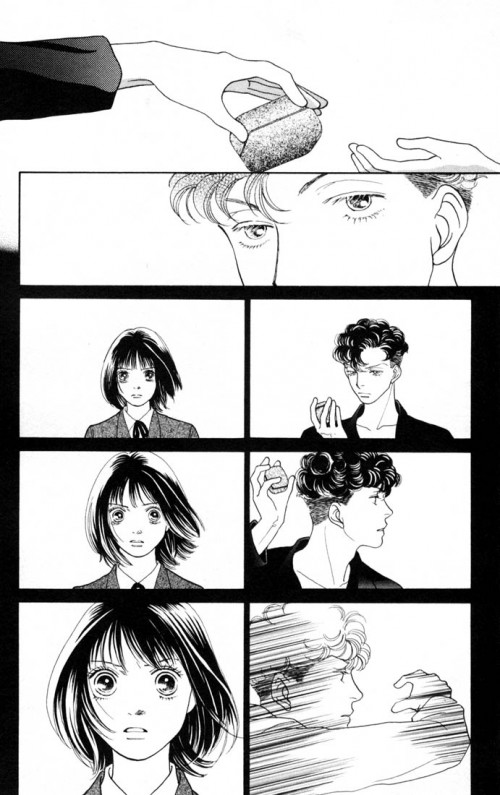
The Kunisawa Amon story arc is a time of growth for both Tsukushi and Tsukasa. Still in love with Tsukasa, Tsukushi dives into the river to search amongst the trash for the necklace, as Kunisawa watches. Tsukushi, embittered by the world and her circumstances, comes to see the good in people she’s long since judged as evil…
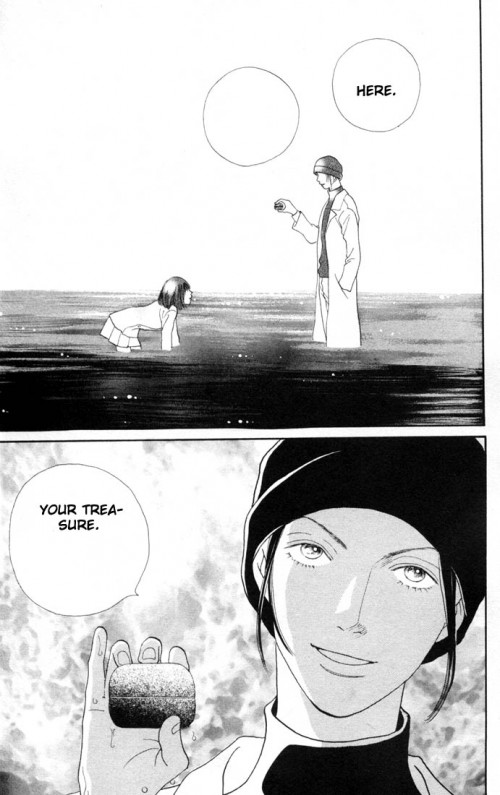
.. and Tsukasa, ever proud and stubborn, learns to bend.
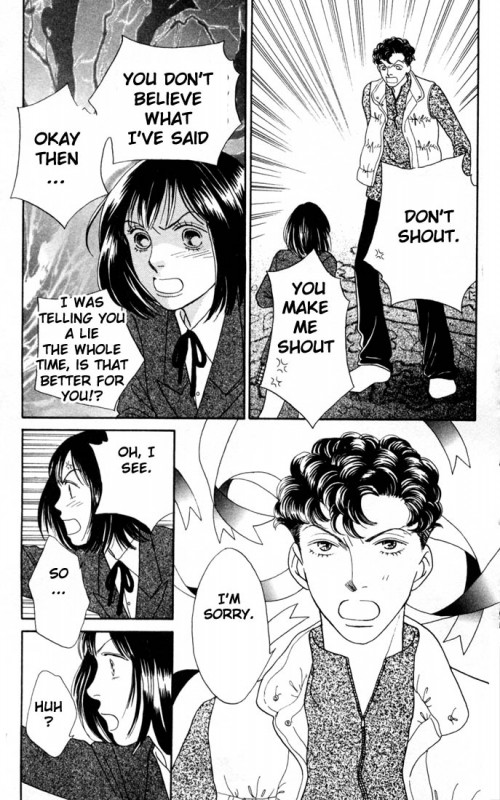
One of the most beautiful parts of Hana Yori Dango these moments of growth. Even in her first work, Kamio Youko shows that she is a master of taking two rough diamonds and polishing them into adults. She removes the surface impurities in her characters, but still leaves in tact the flaws and traits that make them human and relatable. With the narrative bandwith that 200+ chapters provides, she takes the time to do this with all of her side characters in Hana Yori Dango, and all the while they contribute moments of wisdom to Tsukushi and Tsukasa.
Amon’s crowning moment is a one-liner, and like so much of this arc, not what the audience wants to hear. It’s all the more powerful because of this, however.
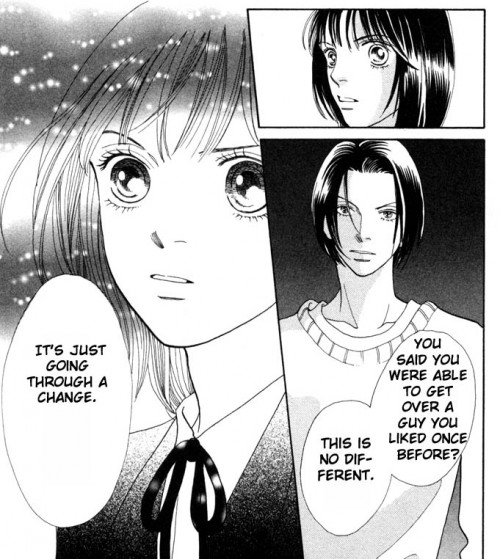
Kunisawa Amon is older than the majority of the characters, more experienced, and doesn’t mind admitting this. His presence confuses and and brings about the unexpected in the plot, but he isn’t a plot device. He isn’t there to explain the inner workings of Domyouji’s “witch” mother, or to get Tsukushi and Tsukasa back together. It’s simply the nature of his character – cold, mature, and able to see the grander scheme – which guides the characters to make their own natural moves towards these ends.
Don't forget the side characters
One response to “Don't forget the side characters”
-
Great post! I have to say, I’ve always liked that Yoko Kamio never turned Amon’s character into a cliche. When he was first introduced, I thought he’d fall for Tsukushi as would happen in most shojo manga, but he’s far too cynical for that to happen. He knows to provoke Tsukushi to be honest with herself so she can finally admit she loves Tsukasa, and I think in many ways he brings the audience’s voice into the series because he asks Tsukushi questions the reader wants to know about the depth of her feelings for Tsukasa, and he also brings in a more mature perspective (such as when he tells her that just because she and Tsukasa are dating again doesn’t automatically mean they’ll have a happy ending). One of my favorite scenes is when Amon asks Tsukushi if there’s such a thing as love that never fades – and she answers that the fun is finding out if there is. I love this scene because it shows that for all the problems Tsukushi and Tsukasa have, she ultimately believes in their love.
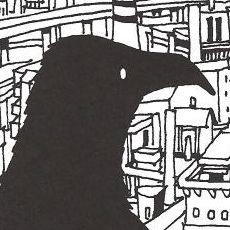
Leave a Reply